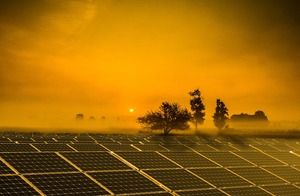MyWorldGo
How Are Solar Panels Affected by Clouds?
Blog Information
- Posted By : Bruce Manning
- Posted On : Dec 12, 2022
- Views : 327
- Category : General
- Description : Solar panels performance is greatly affected by overcast. Solar panels efficiency declines on cloudy days. Read on to know how output of solar panels changes by the presence of clouds.
- Location : Australia
Overview
- IntroductionHigh- effeciency solar panels convert the clean energy of sunlight into electricity used in corporate firms and households. They are considered a source of power. The PV grid is installed over the roof and directly interacts with the sun. However, The solar panel's efficiency is affected by various factors such as weather, temperature and time of the day.Clouds are also a major hindrance to the functioning of solar panels. They block light from the sun. The effect of clouds entirely depends on the type of clouds and the altitude of the clouds in the atmosphere.Sunlight hitting lower altitude cloudsWhen sunlight penetrates the lower clouds, the light and heat get reflected back into space. So if the solar panels on your roof is covered by the lower clouds, then the output of the high-efficiency solar panels will be lesser as compared to the sunny days. As a result of that, power production will also be reduced.Sunlight penetrating higher altitude cloudsWhen sunlight hits higher altitude clouds, they reflect less sunlight into the space. That means the solar radiation that can reach your solar power grid is more than in the presence of lower clouds. The electricity generation will also be higher. However, the clouds at higher heights trap more heat inside.Sunlight penetrating Ice crystalsAt higher altitudes, especially in the northern hemisphere, ice crystals are present in the higher altitude clouds. The sun rays shine brighter than usual after penetrating the ice crystals. This process is called cloud lensing since the higher latitude clouds function as a lens which helps concentrate the light in a certain region.More solar energy, more electricity?Most people think better sunlight can increase the solar energy production. It is not the everyday case. The public utility providers balance the conventional electricity genertation, and the customer needs. Excessive power availability harm your electric devices. It can also trigger a power outage. Hence overly produced solar power output can also cause bigger issues.Help of weather satellitesGeostationary Operational Environmental satellites- R (GOES-R) are weather satellites that calibrate the cloud properties that can be handy for energy companies to predict solar energy generation. GOES-R constantly observe the weather conditions of the earth regions. The energy suppliers use the data of the GOES-R to track and predict the movements of the cloud. It helps estimate the sunlight that will hit the solar panel grid.The use of weather satellite data can be prominent in determining the best spots to capture more solar radiation. It helps to find the most suitable locations for building solar power plants and determine the implementation of the kind of solar panel technology that can capture the most solar energy.In a nutshell, cloudy days do affect solar panels efficiency. But the amount of cloud impacts depends upon the altitudes of clouds in the atmosphere. Solar radiation reflects more in the presence of lower clouds, while higher clouds do the contrary. The clouds at higher altitude help generate more output of solar panels than the lower clouds. Energy companies with adequate solar panel packages can track cloud movements and predict the output of solar panels.
